What I expected when I bought Teardown: a demolition game with the building destruction physics from Red Faction Guerilla.
What I got when I bought Teardown: a demolition game with the building destruction physics from Minecraft. Also it’s not really about demolition.
Now, I feel that my expectation was perfectly fair based on the name and what I knew of the game. Teardown is built on a blocky voxel engine where nearly everything, in theory, is destructible provided you throw enough explosives at it. The name of the game, Teardown, refers to the process of demolishing a building to its foundations so that you can build something new in its place. And there’s been precious few games that have focused on really detailed building destruction; in fact other than Red Faction Guerilla and maybe Bad Company 2 (before DICE walked the fun parts of it back in subsequent titles) I can’t think of a single one. Since it’s incredibly satisfying to detonate a cluster of explosive charges at strategic points around a building and watch the entire thing come crashing down there’s definitely a gap in the market here, one that I thought Teardown would enthusiastically exploit.
Unfortunately it turns out that despite the effort put into the voxel engine and the elaborate buildings to be found within each of its 8-9 maps and 30-odd levels, what Teardown actually is, is Gone In 60 Seconds with incredibly bad car handling.
To be completely fair to Teardown, if I’d actually read the description on the Steam store page I would have discovered that this is almost exactly what it markets itself as (albeit with slightly more optimistic wording). What it’s supposed to be — but what I’m nowhere near convinced it successfully pulls off despite having played all the way through the campaign — is a heist simulator with destructible terrain. There’s a surprising amount of variety in Teardown’s campaign levels, but the majority of the missions consist of the following: you are spawned into a conveniently empty level with a sledgehammer, plus whatever additional demolition tools you’ve managed to unlock during the campaign. Pressing Tab brings up an overhead map with several objective items marked on it that you need to hack, steal, or otherwise dispose of. This might sound easy enough, but if you actually hike over to one of the objectives you’re going to find there’s a little snag.
See that box attached to the wall with the red wire coming out of it? That wire is attached to the car, which is one of the objectives for this particular mission. If you attempt to drive the car away, the wire will break and trigger an alarm that summons a security helicopter. The security helicopter takes 60 seconds to arrive and it will instantly catch you when it does, so you have 60 seconds from the moment one of these alarm wires is broken to complete the rest of the level and make it to your escape vehicle. As each level involves visiting between 3 and 5 objectives, each of which has an alarm wire dangling from it, and because the levels are pretty expansive and your default running speed is very slow, you are going to have to get a little bit creative in order to hit all of the objectives before that 60 second timer runs out.
The idea behind Teardown is that the last 60 seconds of each level that comprise the actual objective run are preceded by 20-30 minutes of scouting, planning and preparation. Part of this preparation is pre-positioning vehicles to quickly cover any sizeable gaps between objectives, and because the cars handle so terribly you’ll need a separate vehicle for each one as you can’t ask more of them than “go in a straight line with no turns” and it would cost too much time to actually manoeuvre them in any significant way. Mostly, though, your time is spent using that nice voxel-based destruction engine to knock holes in walls and floors to create shortcuts to ease your path through the level; since everything is (again, in theory) destructible, then with sufficient preparation time (and explosives) you’re limited only by your imagination in the routes that you can create through a level to get from objective to objective, and which order you do the objectives in.
That’s the sales brochure, anyway. The reality of Teardown, especially in the first half of the game, is extremely disappointing. The problems nearly all stem from the campaign designers giving you a set of theoretically open-ended goals, and then imposing a set of arbitrary restrictions on how you’re allowed to complete them. Most of these restrictions can be traced back to the campaign’s progression system, since you start Teardown with nothing but a sledgehammer and have to unlock the rest of your tools via ranking up your character by completing campaign missions. Every ten objectives you complete grants you a new tool — this is supposed to encourage completing the optional mission objectives and the various side missions that the game sometimes offers you to boost your rank ever higher and get access to more fun toys. The cost of this, though, is that you don’t have any tools at the start of the game and it is an absolute slog.
As a consequence the first mission of Teardown is the absolute worst advertisement for the game that they could have come up with. To start with it’s entirely misleading because it’s one of only two pure demolition missions in the entire game, where you have to reduce a small house to rubble to get you used to the destruction mechanics. This simply highlights just how basic said destruction mechanics actually are. If you’re anything like me, you’ll take your sledgehammer and start knocking out the wooden walls at the base of the house expecting the entire thing to collapse at some point once you’ve taken out enough of the structural support. But it never does; I smashed everything on the first floor of that house into its component voxels, but the first floor and attic remained where they were, levitating in mid-air like a particularly implausible sky-build in Minecraft. This is because everything in Teardown counts as having 100% structural support until you physically separate the entire chunk of voxels from the ground, so if there’s even the tiniest fragment of ground-floor wall remaining it can support the entire weight of a house, or a three-storey mansion, or a factory. And while the house you’re tasked with demolishing in that first mission is mostly made out of wood, it’s also got a brick chimney connecting the first and second floors, which your sledgehammer is completely ineffectual against.
This is far from the only time you’ll run into this problem, either. Since it takes half the campaign to unlock explosives that are actually worth a damn, brick walls and structures are borderline-impassable obstacles because you have very little you can do to knock a hole through them. You do quickly unlock a blowtorch that at least lets you selectively dismember metal gates, but if you come across a wall made of brick (or concrete) you don’t have any options aside from finding a JCB and driving it through the wall — which is a surprisingly painful process seeing how easily the digger blade and wheels can get stuck on wall fragments — or else grabbing propane tanks and hucking them at it. And even that makes the smallest, saddest hole in the world, with at least three propane tanks required to create an opening large enough for you to crawl through. After the blowtorch you unlock a shotgun which can blast through brick walls but which can only do two or three before running out of ammo, and then pipe bombs which are even worse than the propane tanks and which take basically your full ammo supply to make a single hole large enough to admit a human being.
It wasn’t until four hours into the campaign (which took me nine hours total to finish) that Teardown saw fit to unlock a tool called, imaginatively, “Bombs”. Bombs are timed limpet mines that you can stick onto surfaces and which will make a satisfyingly large hole in just about anything, and by a strange and curious coincidence my enjoyment of Teardown increased exponentially once I got them because I suddenly had much more freedom to do the thing the game was supposed to be about. Prior to this point the most useful tool the game had handed me wasn’t anything based around destruction, but was instead a set of planks that I could set down to make ramps and bridges. I do understand that “making a bridge” is a necessary counterpart ability to “making a hole”, but not only is it absolutely baffling that you get the planks a good two hours before you get anything that lets you leverage the destruction mechanic in a good and meaningful way, it means the first half of Teardown is overly focused on making holes in doors and windows rather than walls and floors (and using doors and windows for building access happens to be the same thing I do in every other game, not to mention real life1) because that’s all you can do, and then it shifts to building dumb plank structures like this:
This is partly a function of the mind-bogglingly crap plank placement system and the resulting wacky plank object physics, but I have to say that at no point prior to actually playing Teardown did I envisage such a large part of the game being about making these Lovecraftian plank scaffolds. The absolute crowning moment of idiocy is when you unlock the obligatory level with a safe vault full of gold bullion — finally, a target for a heist game that actually makes sense! – but because the level designers are cowards they encase the whole thing in a metal box that’s literally impervious to all of your tools. The shotgun, the blowtorch, the pipe bombs — nothing you have will even scratch this thing. I didn’t have Bombs at this point, but I did go back and try them once I unlocked them and they can’t make a dent in it either. What you’re actually supposed to do here is use planks to shimmy up a vent shaft into the back of the vault. Let me restate that for emphasis: in Teardown, a game that’s supposed to be about blowing things up so that you can steal stuff, robbing a large safe vault full of gold bars requires zero2 use of the destruction mechanics, and instead has you spend about fifteen minutes fucking around with planks.
And this is my big objection to Teardown: it’s called Teardown, it’s built on a voxel engine that, while inappropriate for full-on building demolition, actually works quite well for the use case of knocking holes in things to create shortcuts, and yet the level designers at Tuxedo Labs seem utterly hell-bent on not letting me do that. The really annoying thing about this is that there’s a run of 4-5 levels in the middle of the campaign where you can see brief flashes of what Teardown could have been. Once you get the Bombs the timed runs become much less obnoxious as you finally have full freedom to plan your route rather than having to work around all of these arbitrary restrictions, and the game even finds time for some pretty decent spins on the basic heist concept. My favourite level in the whole game was the one where you don’t have to steal objects, but instead have to destroy them by shooting them. The first one you blow up triggers the same 60 second timer as all of the other missions, but the reframing of the objective from “plot a route through the level that lets you travel to these five points within 60 seconds” to “plot a route through the level that gives you line-of-sight to these seven points and is in range of your gun” was considerably more flexible and interesting, not to mention really leveraging the destruction as you need to blow up far more of the level to clear sightlines for a good shot.
And then, just as it seemed like Teardown was finally hitting its stride after an incredibly slow start, it hit me with this:
This is a sequence of not one, but three missions where the game confiscates all of your tools and you start each mission with just your sledgehammer again. I have always regarded levels that take all of your fun toys away and which force you to do (for example) a stealth section with just a knife and a rock as a sure sign that the level designers couldn’t figure out how to make their level idea work otherwise, which in turn means it’s probably rather at odds with the fundamental premise that your game is based upon and is just a bad idea in the first place. It’s something that happens far, far too often in videogames; I’ve hated these levels without exception for the last twenty years and I always mentally dock a few points whenever I see one. In Teardown’s case, though, I’m docking several million points for two reasons:
- The entire game is supposed to be about having the freedom to come up with your own solution to a problem. Taking away your tools means you’re entirely reliant on whatever vehicles and objects the level designer has placed in the level for you to use — which means you’re trying to figure out their solution, not yours.
- This tool-less segment is expertly timed to kill any sense of momentum, of “just one more level…” that the game was finally building up. Teardown never really recovers from this. I finished the rest of the game just to see if it could regain any sense of direction or purpose, but it never did, preferring to pit you against invincible guard robots3 for the remainder of the campaign rather than those tense timed runs.
For all that I see the proponents of Teardown talking about how freeform it is, and how its open-ended gameplay concept enables a practically infinite amount of options for completing a mission, the reality is that thanks to the tool progression system and the restrictions built into the level design you have very little actual choice. It tries to inject variety into proceedings by never re-using the same mission setup more than twice, but this just results in a pronounced lack of focus. For every neat idea that it comes up with (transporting heavy safes during a rainstorm which trigger the alarm if they get wet), there’s two others which are rendered criminally dull thanks to only having one way to deal with them (transporting heavy vehicle parts to a target point, which in practice means you have to use a crane vehicle to do it). The last level of the campaign is an homage to Blast Corps, which puzzles me because that means Tuxedo Labs know that Blast Corps exists and yet they went ahead and made Teardown, well, Teardown. I don’t want to get all “Rare made this in a cave, with a box of scraps” about this and I know that Blast Corps and Teardown are going for very different things, but since it’s very noticeable how much better this last mission is than the ones immediately preceding it, perhaps Teardown would have benefited by cribbing a few more ideas from Blast Corps4 instead of trying to come up with far too many of its own.
While I’ve given it a bit of a sustained kicking, though, I’m going to stop short of saying Teardown is a bad game. I think it has a bad campaign, and this has been a review of the campaign, but when it actually delivers what it advertised it comes tantalisingly close to greatness. I might have initially disagreed with the direction of making this a heist game rather than a demolition game, but the levels in the campaign that do live up to the promise of that Steam store description have sold me on it. Teardown was and is a good idea. I just wish the developers at Tuxedo Labs had had the same confidence in that idea instead of undermining it with questionable level design; as it is Teardown offers a few scattered flashes of fun, but ultimately doesn’t even come close to realising its full potential.
- Well, not so much the window part. ↩
- Okay, not quite true. You’ll need about two seconds of the blowtorch to saw through two metal bars at the end of the vent. ↩
- I have a whole other rant about these. Teardown is a game about destruction, so perhaps you’re thinking there’s some novel destruction-based way of dealing with the robots. Maybe you could trap them in pits, or bury them under rubble? Ha ha, don’t be silly, you just lure them next to water and then knock them into it with an explosion. Why would Teardown ever use its destruction mechanics for anything interesting? ↩
- God knows nobody else is right now. ↩

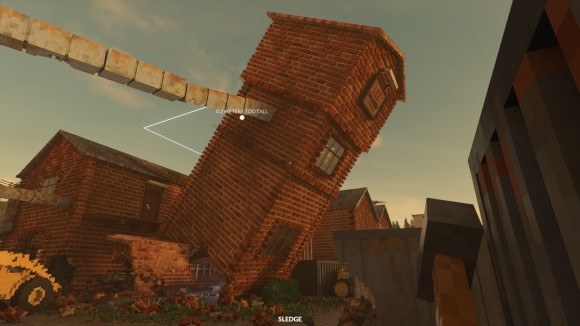
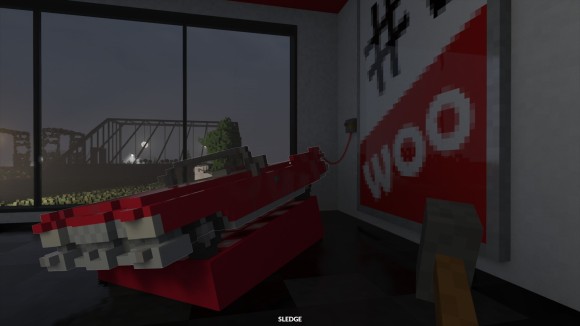
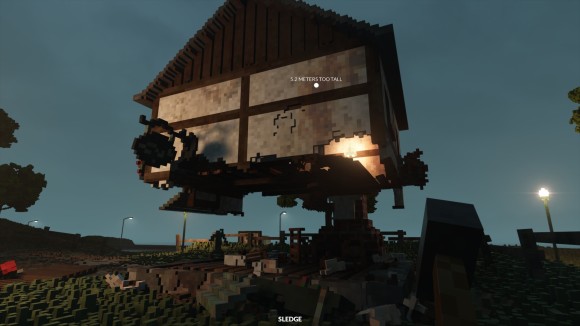
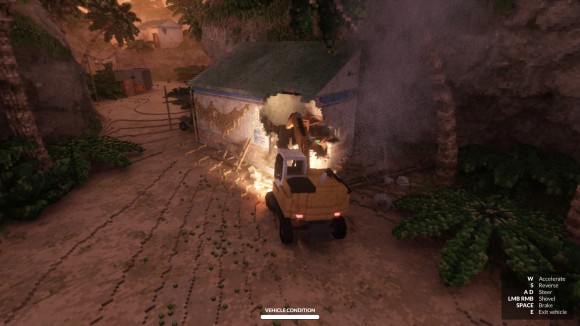
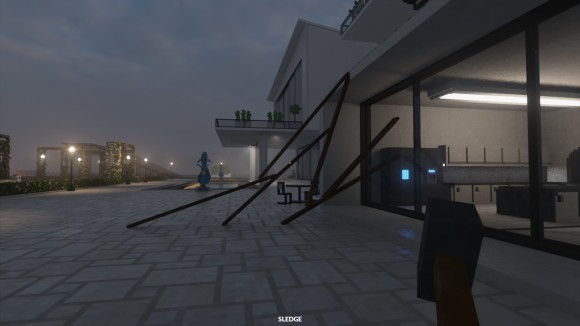
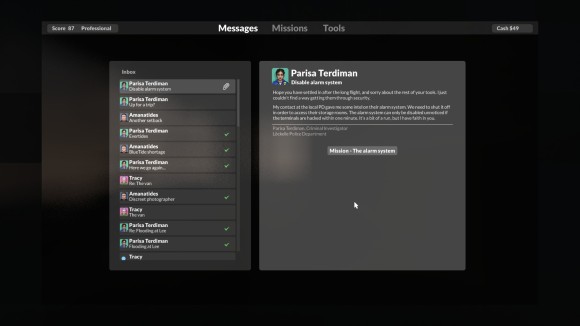
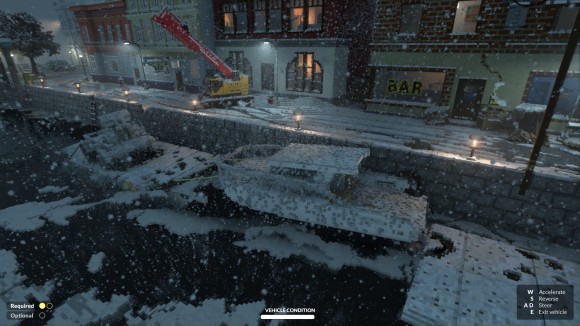
That’s a shame, I genuinely was excited for Teardown when it was first announced but the campaign gameplay videos that had been showing up in recent months made me a bit wary. Looks like the wariness (that’s a word, look it up) was earned.
Oh well, if they can improve the campaign for a sequel then the basic idea could still be tremendous fun.
m